Alright, folks, let’s dive into a classic that’s loved all around – the Ukrainian borscht. Now, you might think, “Oh, it’s just a soup!” but wait till you see the mouth-watering combination of flavors and textures that this seemingly simple dish brings to the table.
With my comprehensive guide, you’ll gain an enriched understanding of this hearty staple, master a step-by-step method to cooking the perfect borscht, and unravel the tricks that transform this soup from ordinary to extraordinary.
You’ll also explore diverse variations, companion dishes, and savvy storage methods. This article is your roadmap to creating a Ukrainian culinary masterpiece, injecting warmth and flavor into your meals while solving your culinary conundrum.
So, why wait? Delve in; your perfect borscht recipe awaits!
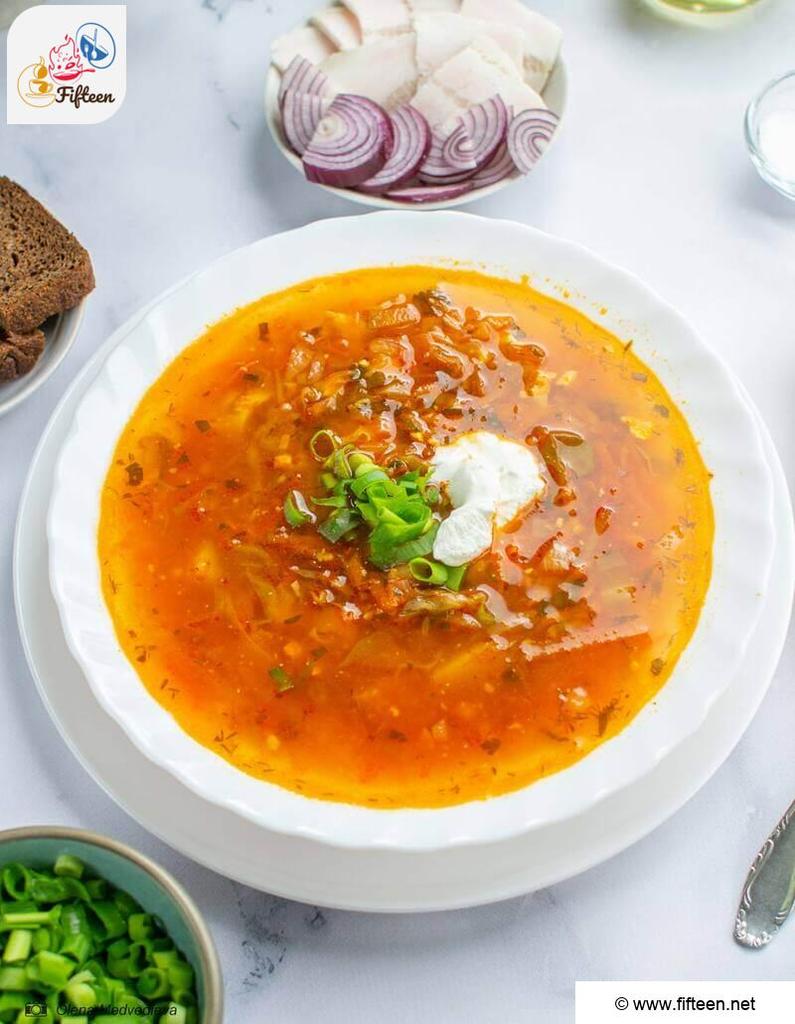
Borscht Is A Visiting Card of Ukrainian Cuisine!
First, let’s talk about borscht (sometimes spelled borsch). That ravishing red soup that sits at the heart of every Ukrainian feast, loved by all, young and old alike.
It’s more than just a beet-tomato-based hot soup; it’s an iconic dish of Ukrainian cuisine, bringing warmth, comfort, and a taste that dances on your tongue with every spoonful.
Now, the roots of this legendary dish reach back to the Middle Ages, having left its flavorful mark on the traditions of various Eastern Slavic Nations.
From Ukraine to Poland, Belarus to Lithuania, Romania to Russia, every place offers a unique spin, like a regional accent in a shared language of deliciousness.
The beauty of borscht lies in its versatility. There’s no one-size-fits-all recipe. Some parts of Ukraine have their own tweaks, and while beetroot and tomato are constants, other elements may vary. You might find it simmering with a hearty meat broth or shining bright as a vegan delight.
Today, I’m going back to the roots, to the version that bridges generations – from the trendy, modern young cooks to loving, wise grandmothers. This recipe is as timeless as it gets.
And did you know? In 2022, UNESCO added the beloved Ukrainian borscht to its List of Intangible Cultural Heritage.
Moreover, borscht is traditionally served during significant holidays and special occasions in Ukraine, such as Christmas and weddings.
That’s right – the humble, homely soup is a global superstar now!
What Are the Must-Have Tools for Borscht?
Let’s gather the following tools to prepare borscht:
What Are the Main Components of Borscht?
Here are the must-have ingredients for borscht:
Main Ingredients
Seasonings and Sides
What Are the Detailed Instructions for Borscht?
Follow 4 main steps below to make the perfect borscht:
Step 1: Prepare the Broth
Begin with chicken legs and bone-in pork ribs. Clean them thoroughly, then add them to a pot of cold water along with bay leaves and black peppercorns.
Heat until boiling, then remove the foam, reduce the heat, and simmer until the meat is fully cooked, which should take about 30 minutes.
Step 2: Prepare the Vegetables
While the broth is cooking, clean and cut the required vegetables. Chop the onion, garlic, and pepper. Grate the carrot. Shred the cabbage and cube the potatoes.
Cut the beetroot into small strips. Add the chopped beetroot to the meat broth and let it cook together for another 10-15 minutes.
Step 3: Fry the Vegetables
In a heated pan, add butter and olive oil. Add the onion, garlic, sweet pepper, and sauté until golden brown. Next, add the carrots and fry for a couple more minutes.
Incorporate the tomato juice, tomato paste, 0.5 teaspoon of salt, and 0.25 teaspoon of pepper. Continue to simmer for approximately 10 more minutes.
Step 4: Finish the Dish
Remove the meat from the broth and chop finely after it has cooled.
Increase the heat to make the broth boil. Add the cubed potatoes, followed by the cabbage a couple of minutes later.
Incorporate the tomato mix and chopped meat and cook until tender, about 15 minutes.
Finally, add the dressing, which is made up of chopped herbs, including dill, parsley, green onions, garlic, and a boiled egg.
Season with salt and pepper as needed, then cook for another 5 minutes. Your borscht is now ready to serve.
Tricks to Make Perfect Ukrainian Borscht
What Are the Ideal Side Dishes for Borscht?
Borscht, like any soup, has a variety of accompaniments, but Ukrainian cuisine has its own unique traditions.
What Are Different Soup Bases for Borscht?
Below are 4 different soup bases for borscht:
Best Methods for Storing and Reheating Borscht
It’s time to explore the proper storing and reheating method for borscht:
Storing Ukrainian Borscht
Borscht is an excellent candidate for meal prep as it stores well. After the soup cools to room temperature, you can refrigerate it in an airtight container. It typically keeps well for about 5-7 days in the fridge.
If you plan to store it for a longer period, freezing is also an option. Once cooled, transfer the borscht to freezer-safe containers or heavy-duty freezer bags and freeze. Properly stored, it can maintain quality for about 2-3 months.
Reheating Ukrainian Borscht
For reheating, if the borscht is frozen, it’s best to let it thaw overnight in the fridge before warming it up.
You can reheat the soup in a saucepan over medium-low heat on the stovetop, stirring occasionally until it reaches your desired temperature.
Alternatively, if you’re in a rush, you can reheat the borscht in a microwave-safe bowl in the microwave. Start with 2-3 minutes on high, stirring halfway through, then add more time, if needed, based on your microwave’s power.
What Are the Popular Variations of Borscht?
Borscht comes with 6 common variations, as described below:
Borscht Is Definitely Worth Trying!
It’s often said that the number of borscht recipes is equivalent to the number of Ukrainian families. You might fancy borscht without cabbage or perhaps with the addition of beans or mushrooms.
It’s common to see borscht recipes treasured within families, handed down through generations, and occasionally kept under lock and key. Don’t miss out on trying this wonderful and incredibly healthy dish!
Hey there, lovely readers! I hope you thoroughly enjoy this soup and its recipe! If you do, feel free to like and share this article with your friends. Drop a comment below; I’m super eager to hear about your Borscht-cooking experience!
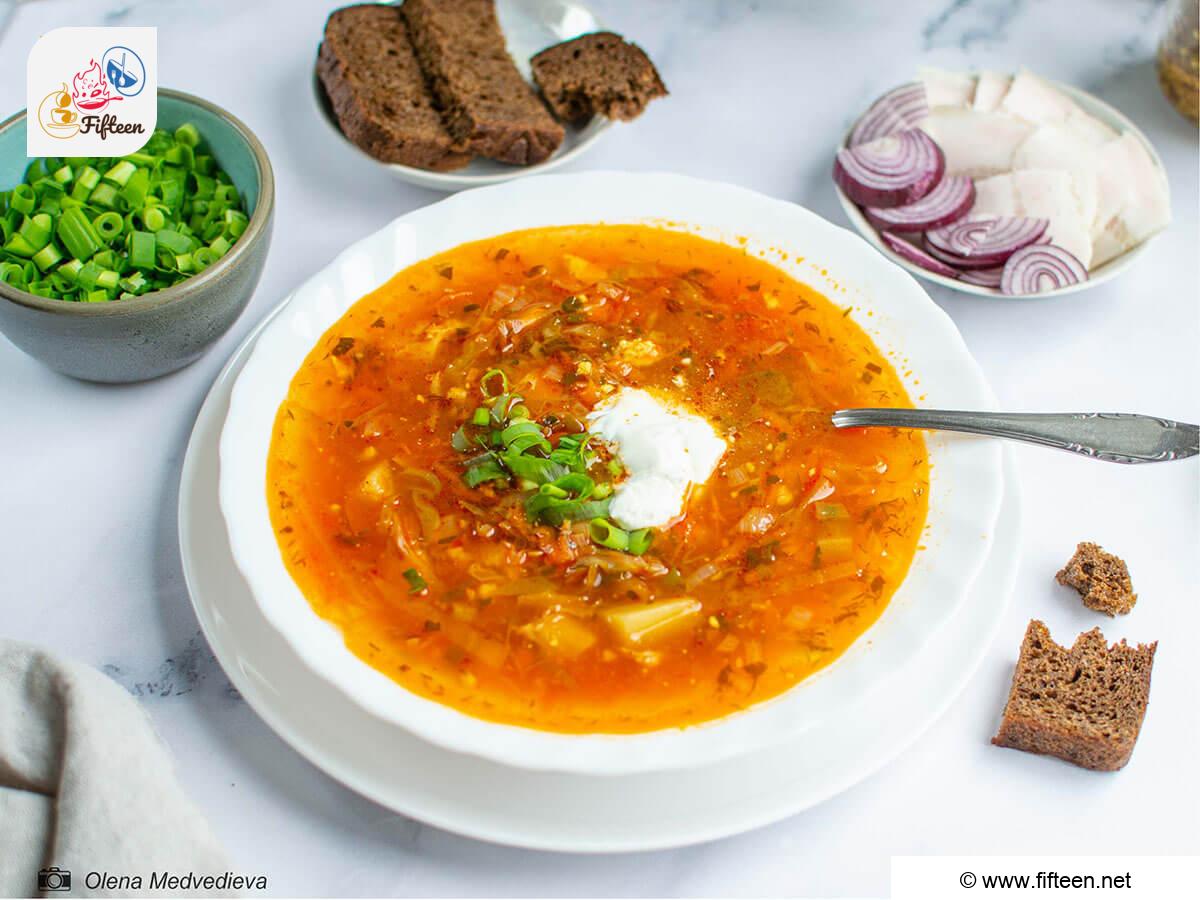
Ukrainian Borscht Recipe
Equipment
- Pot
- Skillet
- Spatula
- Knife
- Cutting Board
- Ladle
- Grater
Ingredients
Main Ingredients
- 2 quarts water
- 2 chicken legs
- 3 bone-in pork ribs
- 1 beetroot chopped
- 1 onion chopped
- 1 carrot grated
- 0.5 bell pepper chopped
- 3.5 ounces cabbage
- 7 ounces tomato juice or fresh tomatoes minced
- 2 tablespoons tomato paste
- 2 potatoes cubed
Seasonings and Sides
- 1 teaspoon black peppercorns
- 2 bay leaves
- 2 garlic cloves chopped
- 3 tablespoons parsley and dill green onion finely chopped
- 2 garlic cloves very finely minced
- 1 egg boiled
- 2 tablespoons olive oil for frying
- 1 tablespoon Butter
- 0.5 teaspoon salt
- 0.25 teaspoon ground black pepper
- 5 tablespoons sour cream
Instructions
- Begin with chicken legs and bone-in pork ribs. Clean them thoroughly, then add to a pot of cold water along with bay leaves and black peppercorns.
- Heat until boiling, then remove the foam, reduce the heat, and simmer until the meat is fully cooked, which should take about 30 minutes.
- Chop the onion, garlic, and pepper. Grate the carrot. Shred the cabbage and cube the potatoes.
- Cut the beetroot into small strips. Add the chopped beetroot to the meat broth and let it cook together for another 10-15 minutes.
- In a heated pan, add butter and olive oil. Add the onion, garlic, and sweet pepper, and sauté until they are golden brown. Next, add the carrots and fry for a couple more minutes.
- Incorporate the tomato juice, tomato paste, salt, and pepper. Continue to simmer for approximately 10 more minutes.
- Remove the meat from the broth and chop finely after it has cooled.
- Increase the heat to make the broth boil. Add the cubed potatoes, followed by the cabbage a couple of minutes later.
- Incorporate the tomato mix and chopped meat and cook until tender, about 15 minutes.
- Finally, add the dressing which is made up of chopped herbs, including dill, parsley, green onions, garlic, and a boiled egg.
- Season with salt and pepper as needed, then cook for another 5 minutes. Your Borscht is now ready to serve.
Video
Notes
- The time listed above is based on about 6 servings.
- For a rich and delicious broth, begin with cold water and your chosen meat.
- You’re free to use any kind of meat – poultry, beef, or pork. However, using meat on the bone is highly recommended.
- While the meat is boiling in the broth, make sure to skim off any foam that forms on the top.
- It’s best to simmer the dish on low heat to maintain robust flavors and keep the vitamins intact.
- Pay close attention to the order in which you add the ingredients to the borscht. Different vegetables require varying cooking times.
- Once the cooking is done, let the borscht rest for about 10-15 minutes to let the flavors meld together. For even more depth of flavor, cover the finished dish with a towel for thermal insulation and let it steep a bit longer.
- Whenever possible, use fresh ingredients, especially when it comes to herbs. For example, using dried garlic will give the dish more heat rather than a fresh, fragrant flavor.
- Add your spices towards the end of the cooking process. This ensures that their flavors don’t dissipate during the cooking.
- Adjust the amount of water to your preference, whether you want your borscht thicker or thinner.


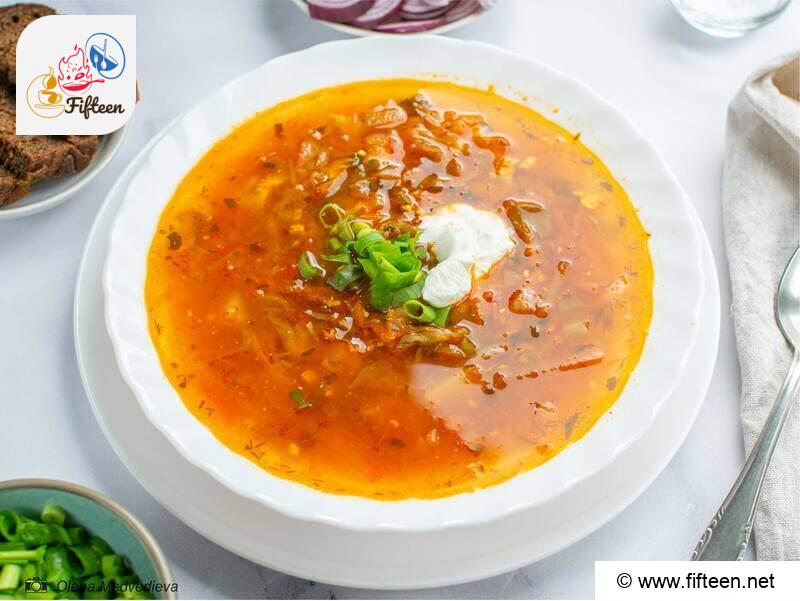
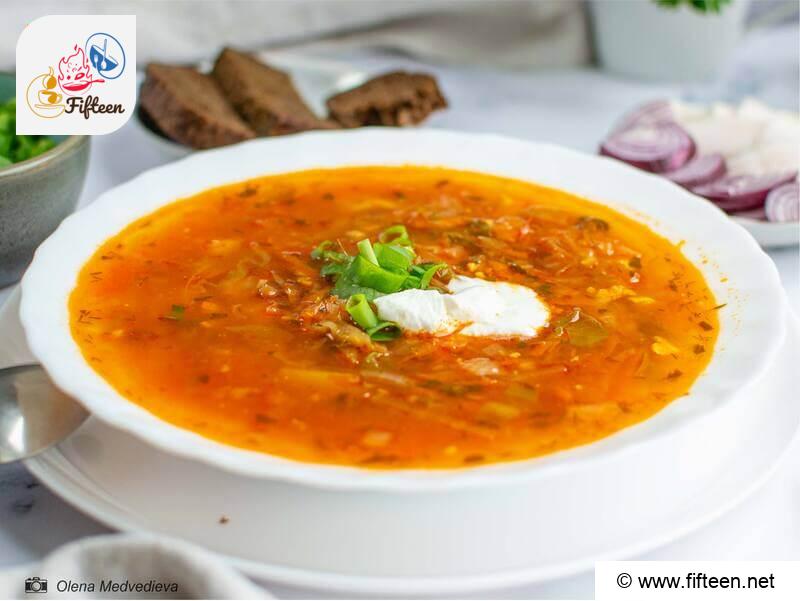
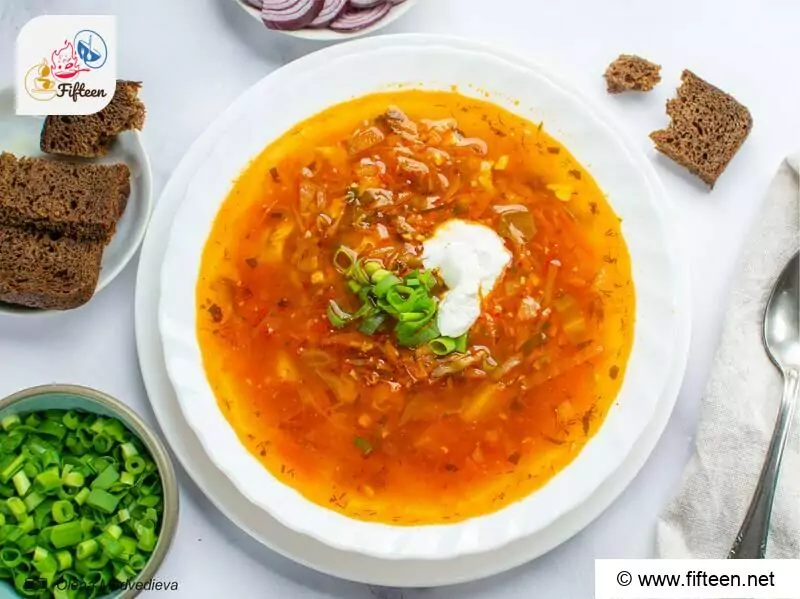
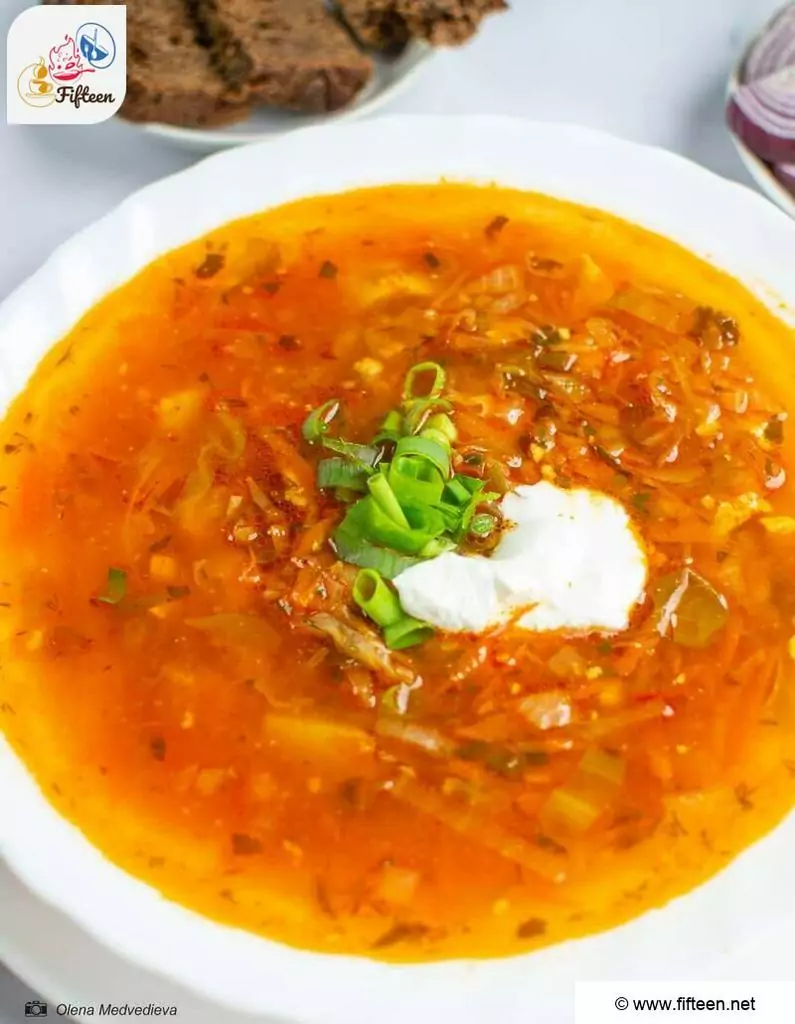
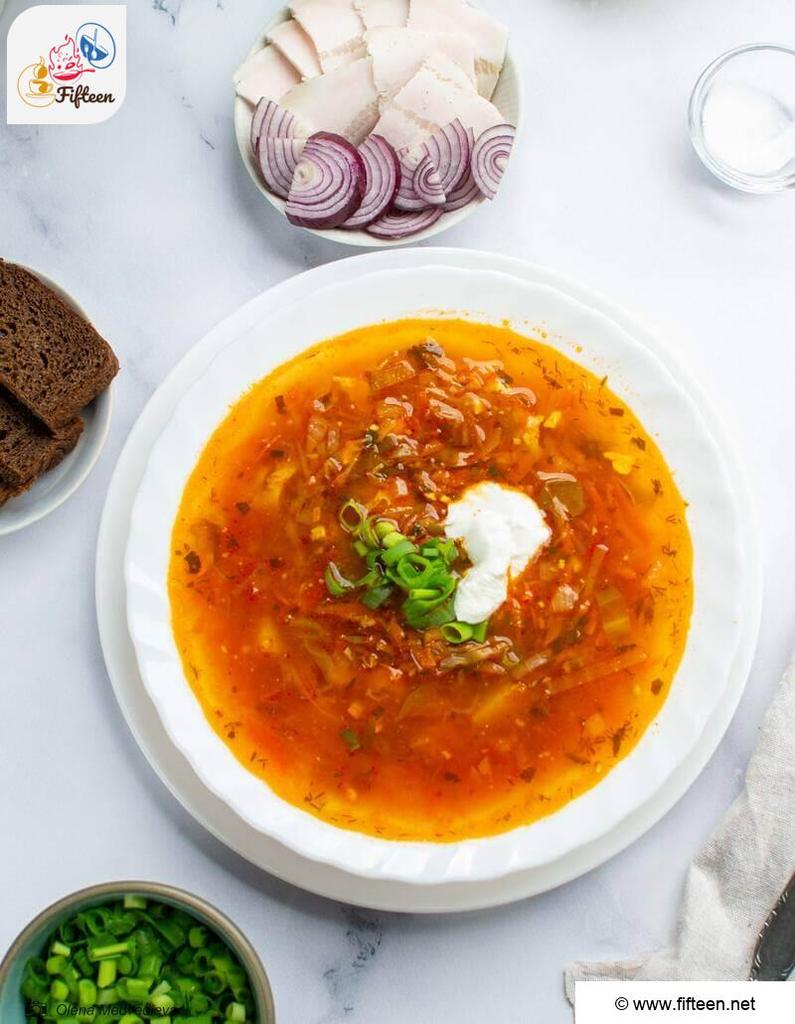
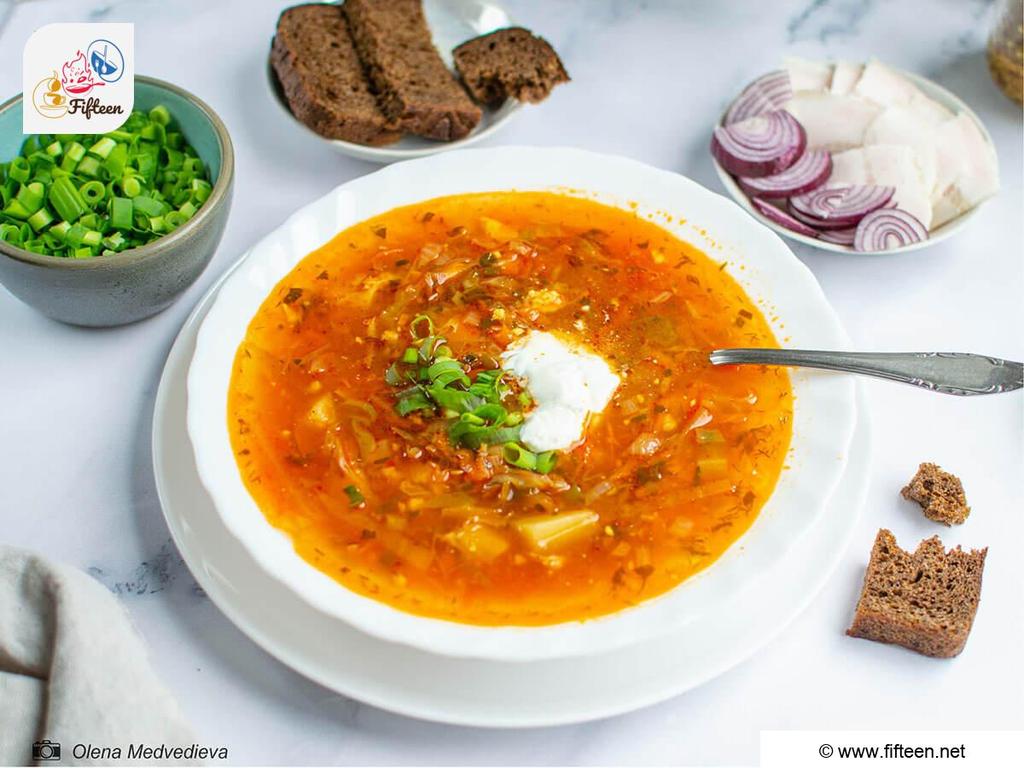
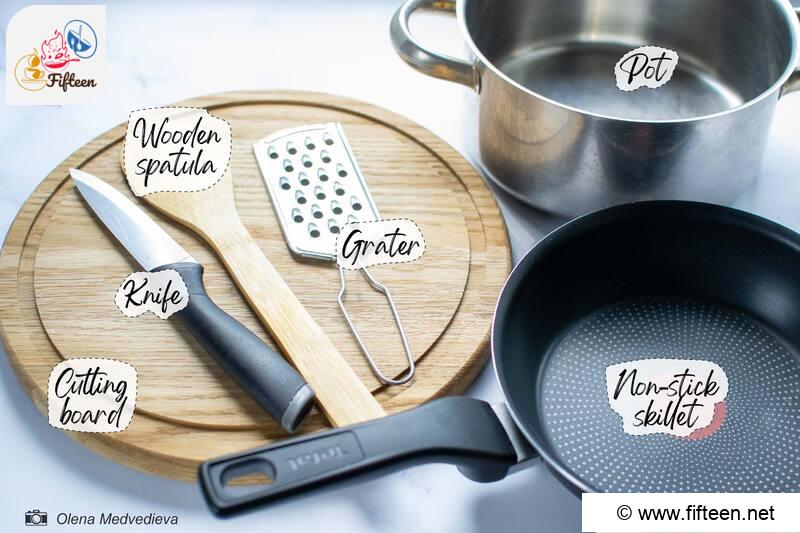
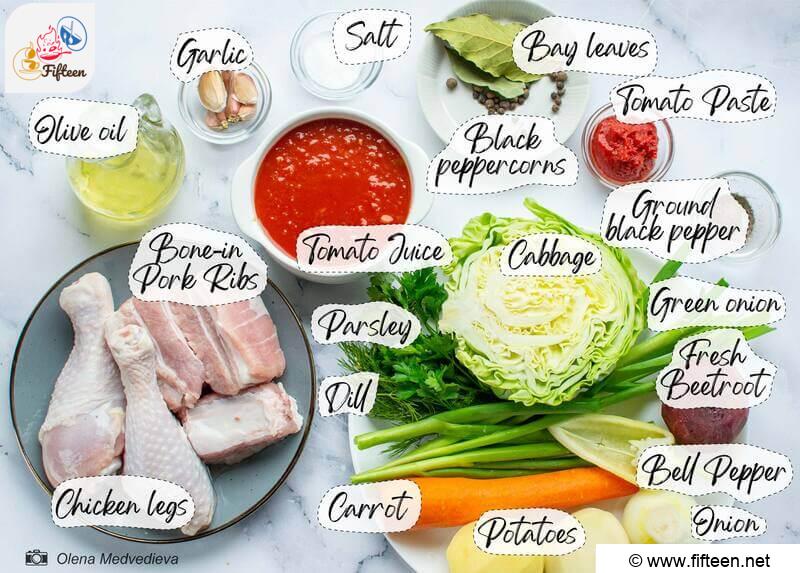
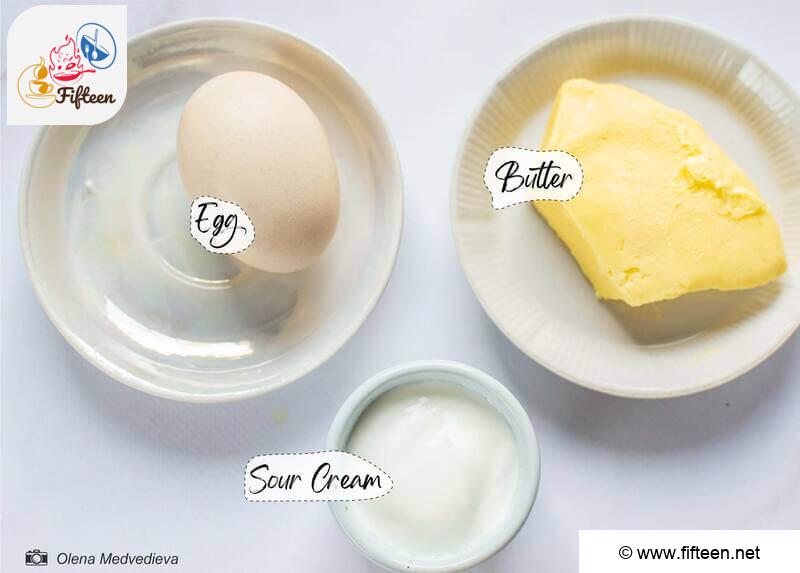
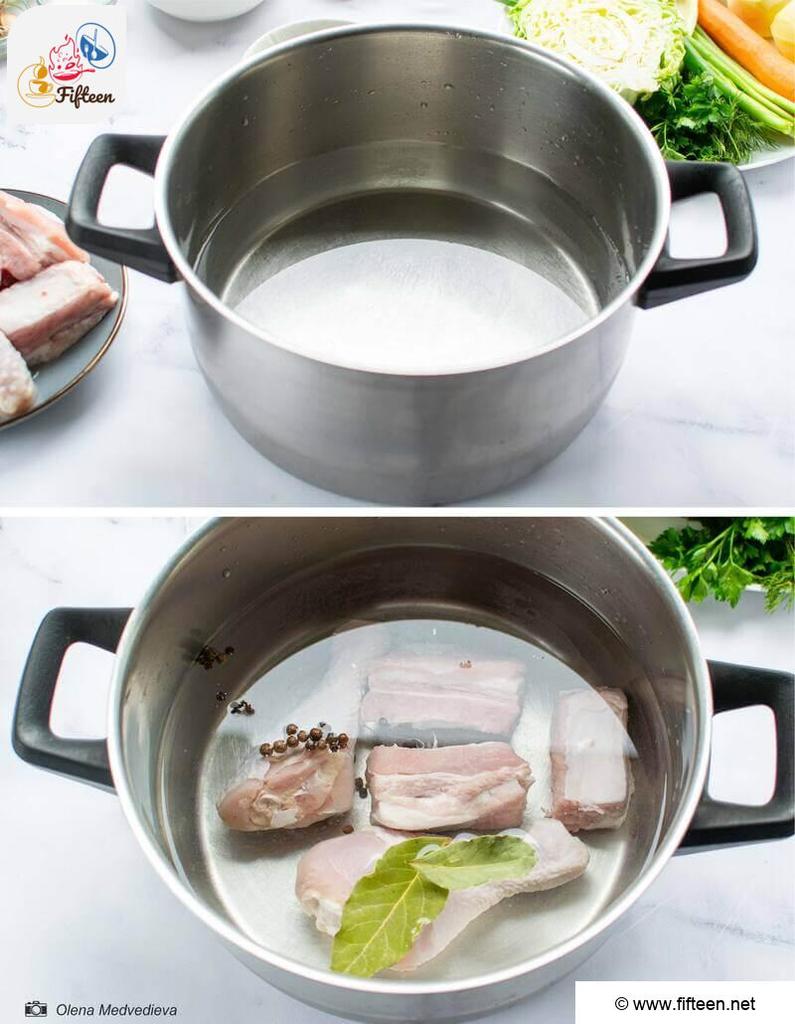
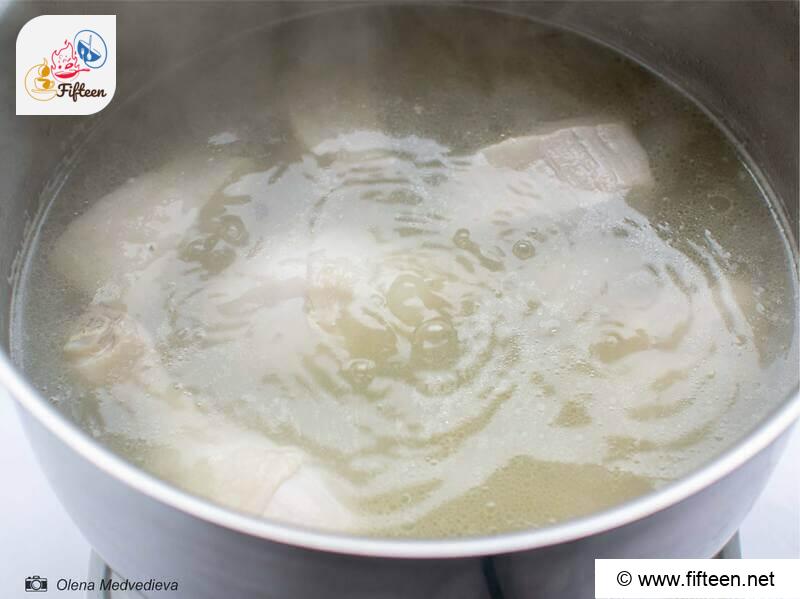
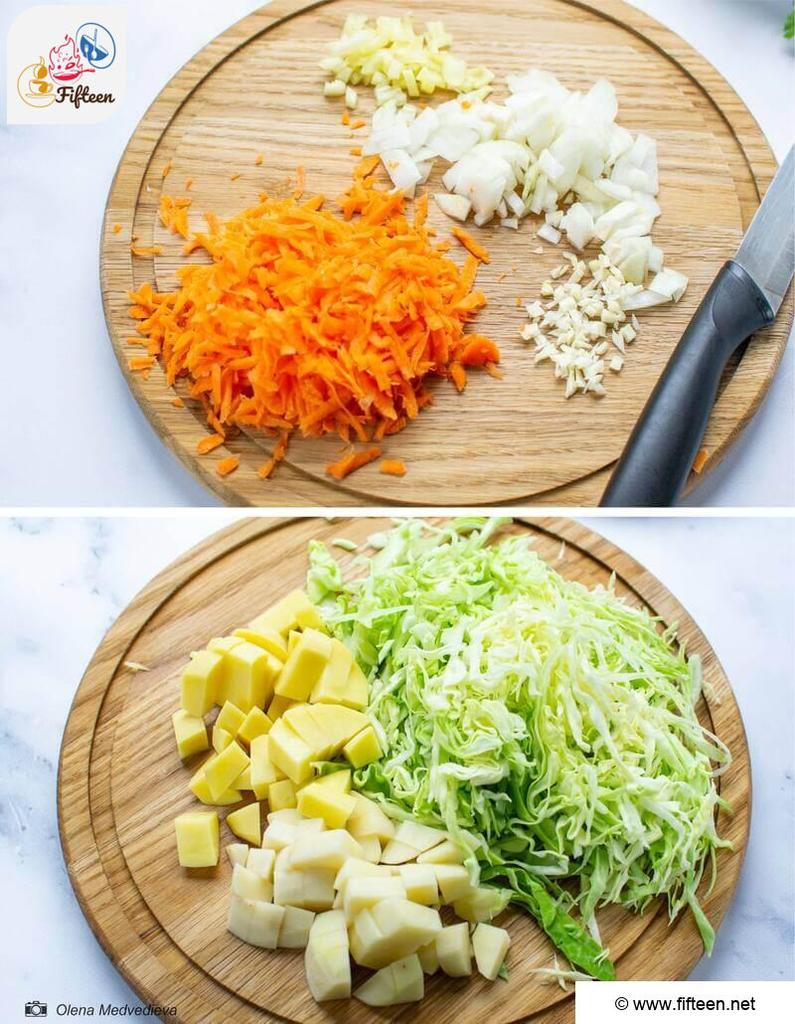
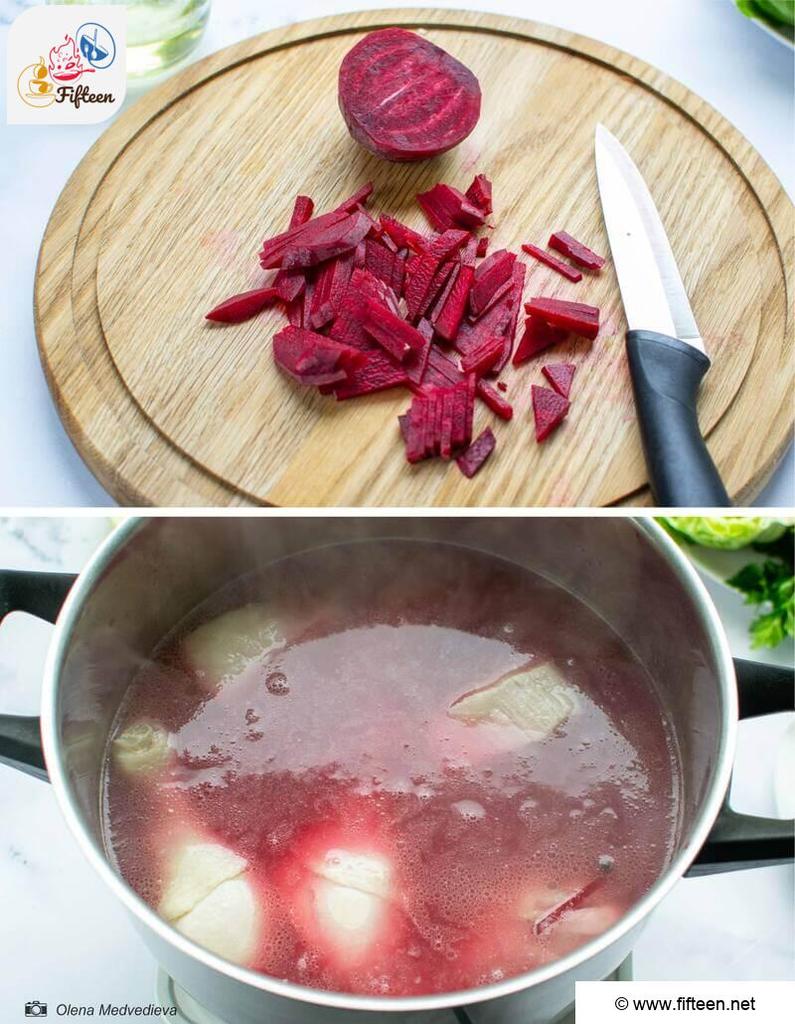
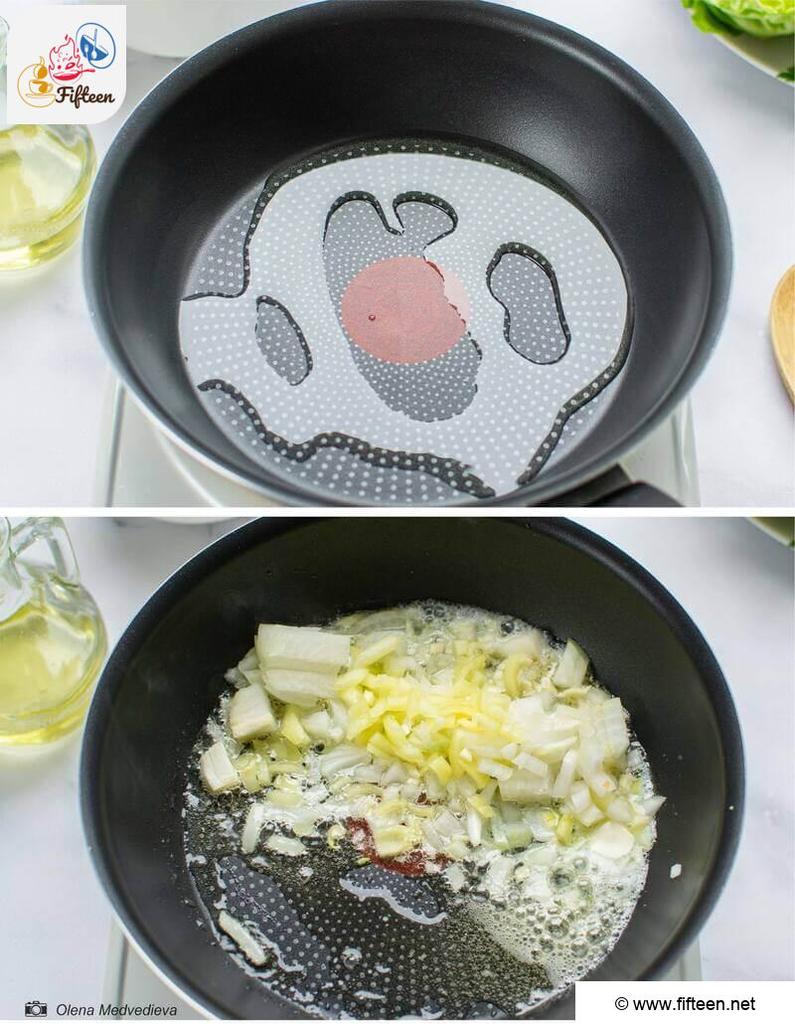
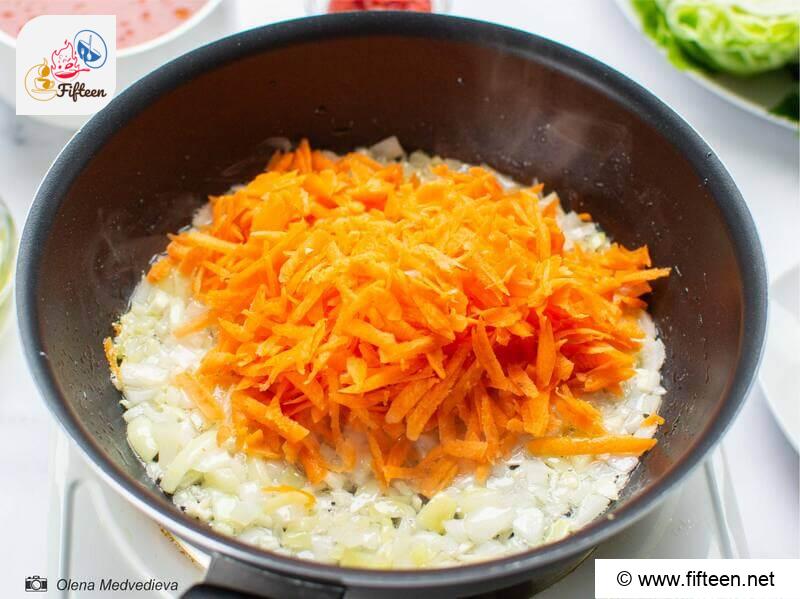
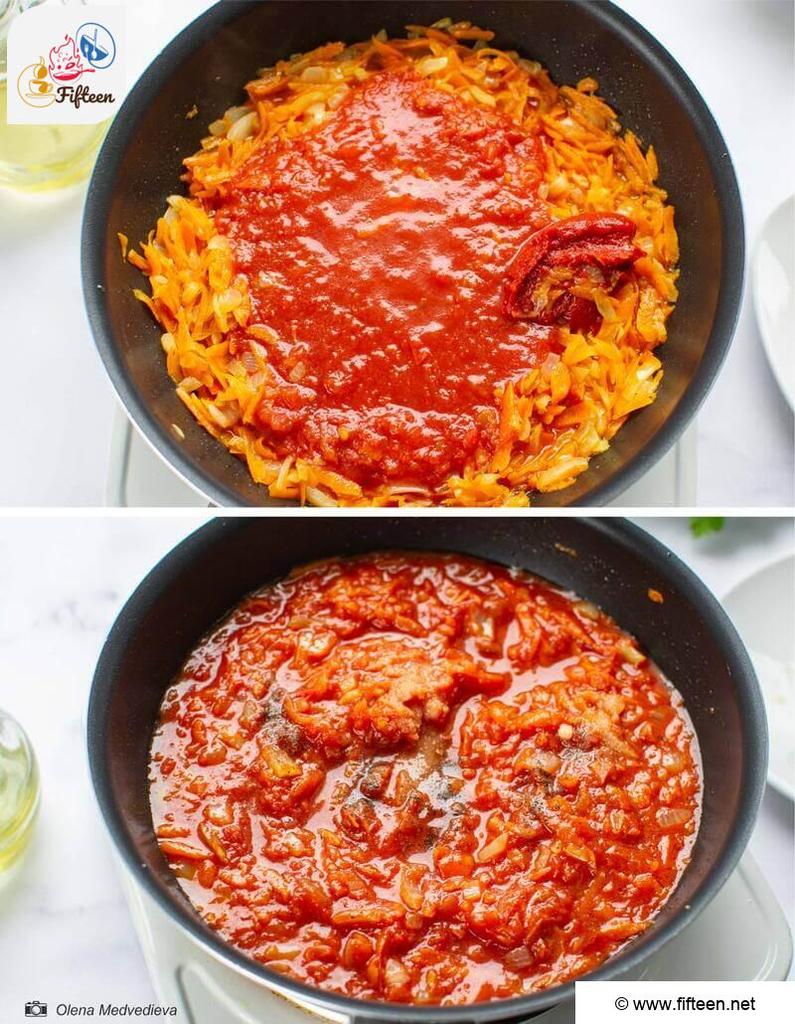
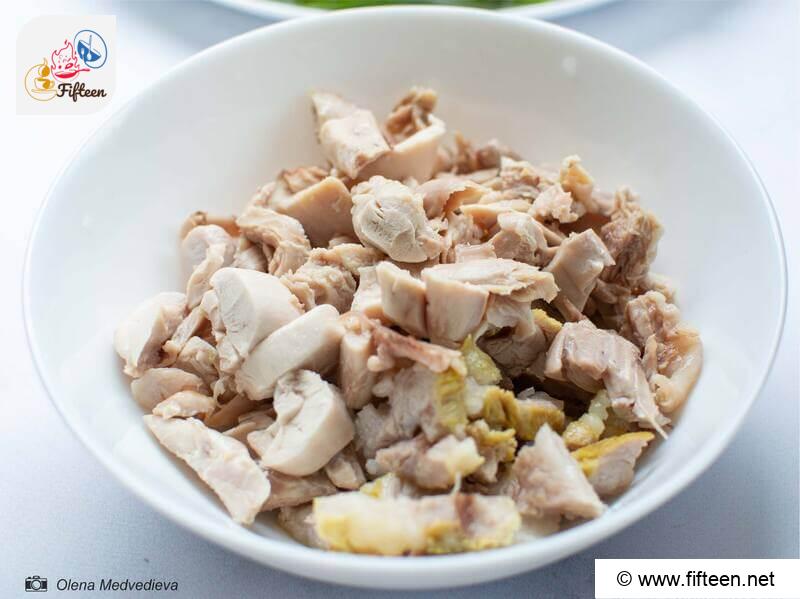
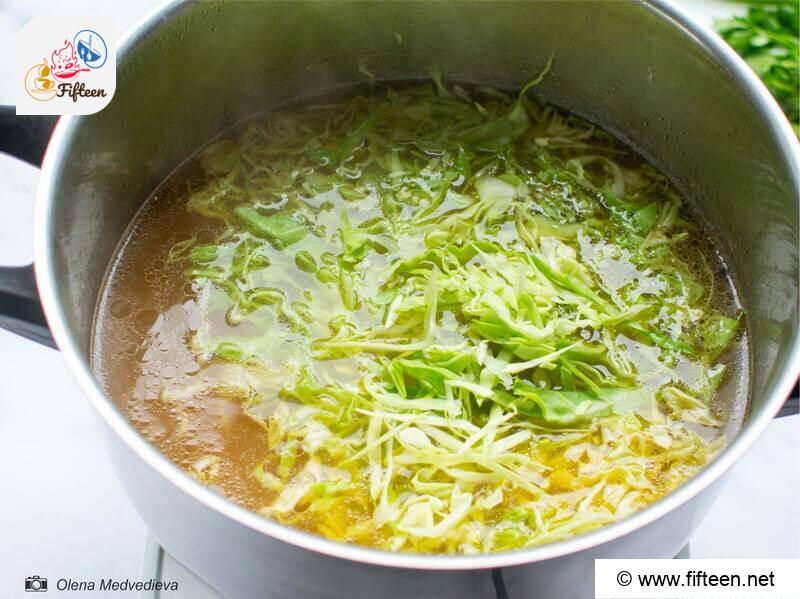
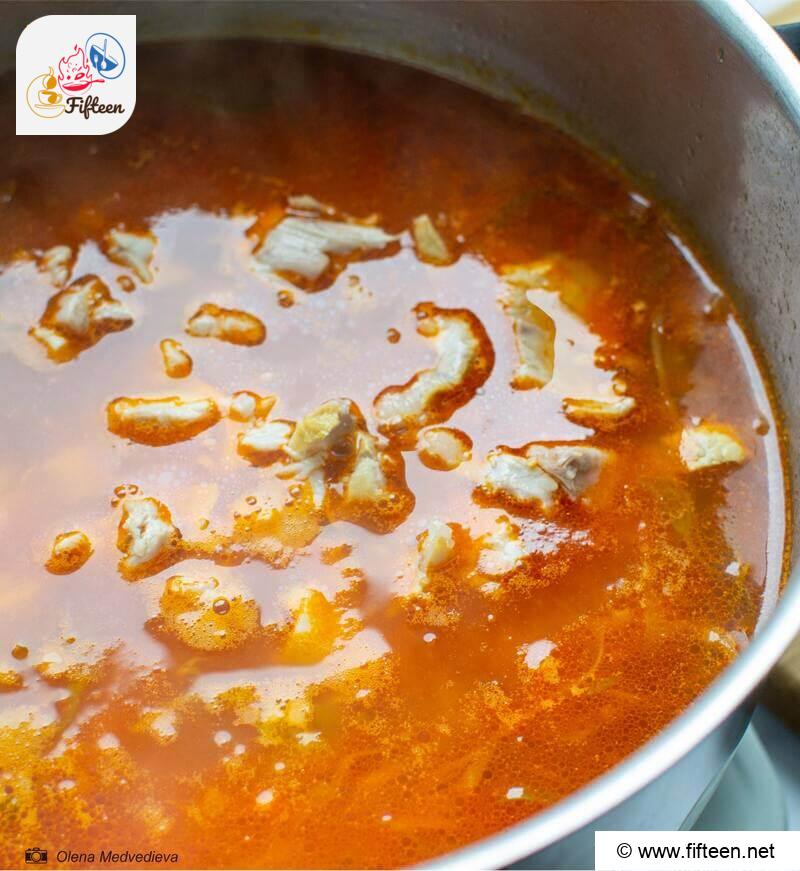
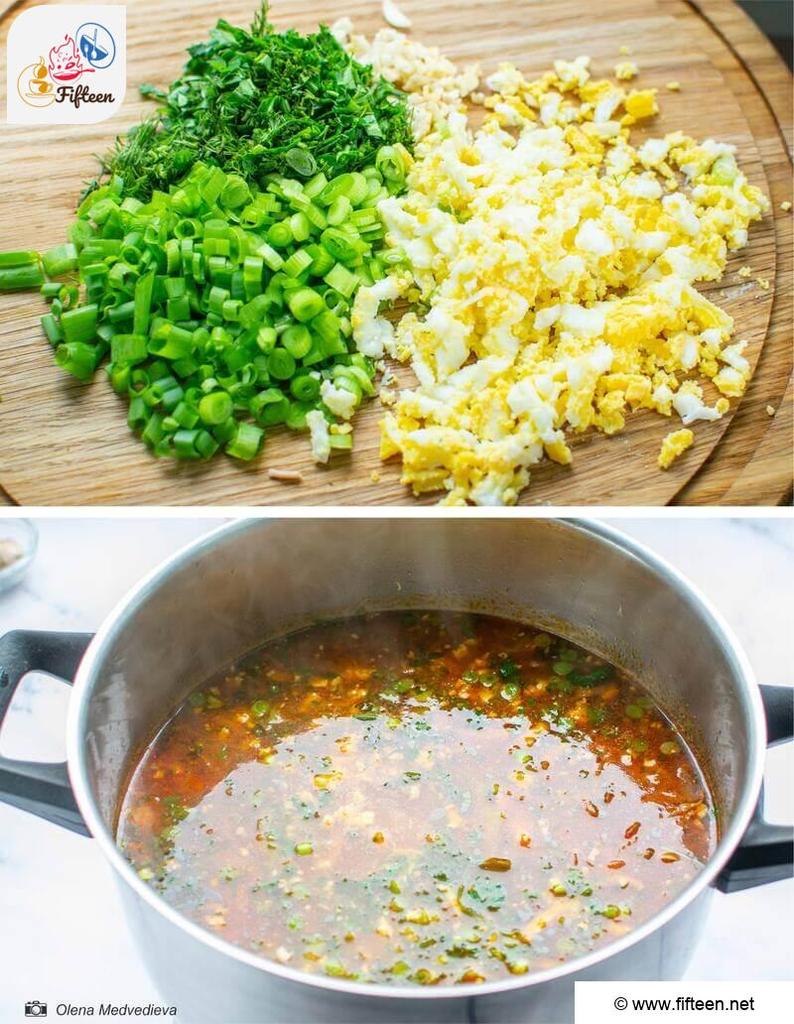

Olena Medvedieva
Content Writer
Expertise
Content Writer, Meal Planning, Recipe Development, Food Editor, Cooking-video Maker, Culinary Storytelling, Food Photographer, Food Stylist, Chef
Education
Taras Shevchenko National University of Kyiv, Ukraine
Introducing Olena, a culinary enthusiast from Ukraine, whose journey from philology studies to the world of food photography and styling is nothing short of inspiring. With a deep-seated love for both cooking and capturing stunning visuals, Olena’s work reflects her passion for culinary arts and her commitment to showcasing the beauty of Ukrainian cuisine. Her expertise extends beyond the kitchen, as she combines her creative talents to produce captivating images that grace numerous online platforms and publications.